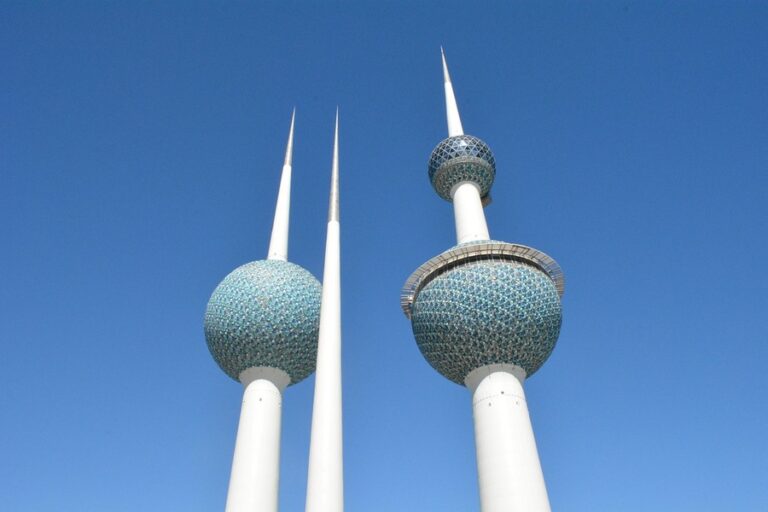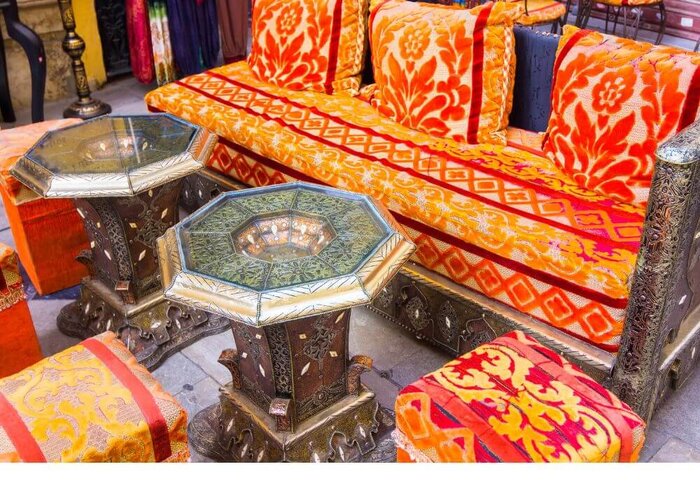The Egyptian Cuisine
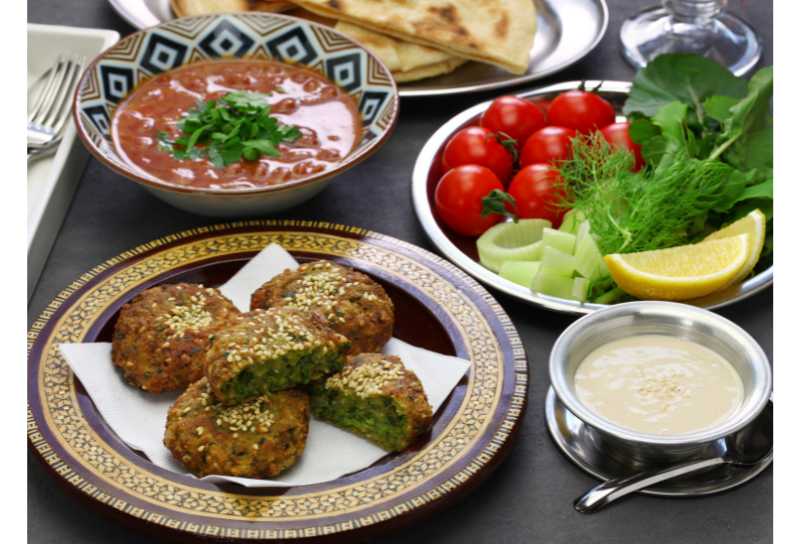
Egyptian cuisine is one of a kind, with many signature dishes that mix a medley of flavors to create recipes like no other.
The country’s long history, geographic location, and culture all combine to add many influences to the Egyptian kitchen.
Whether it is the vegetable-rich dishes influenced by Mediterranean cuisine, delicious desserts dating back to the Islamic rule in Egypt, or recipes carried halfway across the globe during the British occupation then developed to suit the Egyptian culture, these recipes will introduce a whole new range of flavor to your taste buds.
Table of Contents
Egyptian Main Dishes
Mahshi
An Egyptian household favorite, Mahshi serves as an essential part of most food gatherings in Egypt, and for a good reason.
The popular dish comes in many shapes and forms that suit every taste. The word “Mahshi” means stuffed and covers a range of stuffed vegetables, including zucchini, eggplant, bell peppers, vine leaves, and cabbage leaves.
The vegetable is made hollow using a special kitchen tool, then filled with the stuffing. The most popular version of the dish is vegan, with a stuffing made of rice and herbs like parsley and coriander.
Mahshi is often served as a side dish with beef or chicken-based main dishes but is also a favorite among vegans in Egypt. Other variations include minced beef in the stuffing.
Koshari
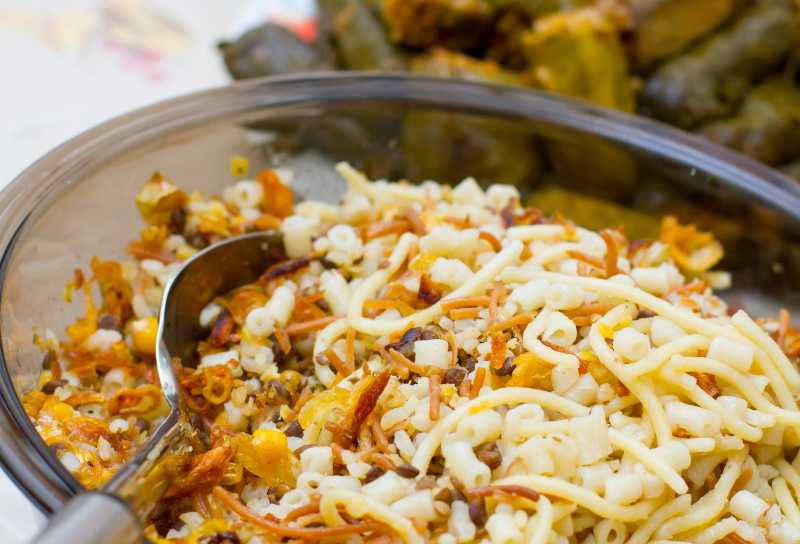
Another vegan favorite, Koshari is a mixture of brown lentils, boiled pasta, and rice. It is made tastier with additions picked according to taste, including tomato sauce, chili sauce, da’a (a mixture of vinegar, lemon juice, and minced garlic), chickpeas, and crispy onions topping.
Koshari is a very popular street food in Egypt, often served in paper boxes to eat on the go.
Ta’ameya
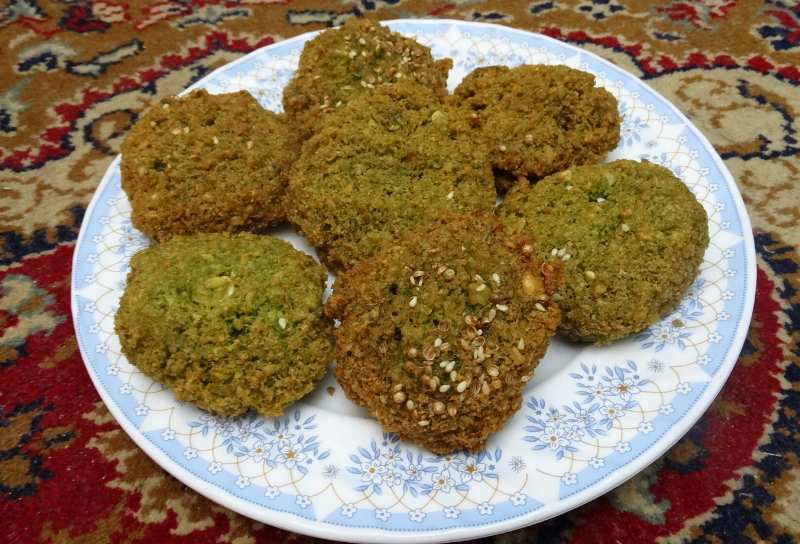
The Egyptian take on falafel uses crushed fava beans instead of chickpeas.
Mixed with onions, garlic, and several herbs to form a green paste, the Ta’ameya balls are dropped into hot oil and fried to crispy perfection, then served in hot pita bread, topped with shredded fresh vegetables and tahini sauce.
Variations on the crunchy Ta’ameya sandwiches include stuffed Ta’ameya, which has a spicy tomato mixture at the center of the fried ball, and Ta’ameya amatee, which is a baby Ta’ameya version that is extra crunchy.
Molokheya
If there is one meal that is so exclusively distinctive of the Egyptian cuisine, it is probably the delicious green soup called “Molokheya”. Molokheya dates back to the age of the pharaohs who thought the Molokheya plant was poisonous.
When the Hyksos invaded ancient Egypt, they tried to use the supposedly poisonous plant to kill Egyptians. Not only did the plan fail, but this delicious Egyptian dish was born and continues to be one of the most popular in Egyptian households.
Using a base of chicken or beef broth, a green paste made of the Molokheya plant leaves is added to the broth.
In a separate skillet, a delicious mixture of buffalo ghee, minced garlic, and dry coriander is prepared, called “Ta’leya”, then added to the soup.
The result is an iconic fragrant green soup that is either served on top of white Egyptian rice with a side of chicken, or served in soup bowls and simply scooped into bits of hot pita bread.
Sweets and Desserts
Umm Ali
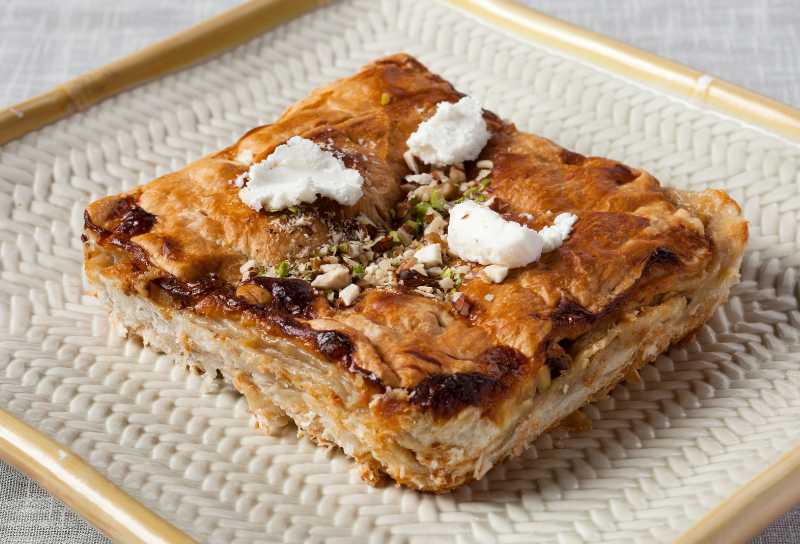
Created in celebration of the death of Shajarat Al Dur, the second wife of the first Mamluk ruler of Egypt, Umm Ali’s sweet taste betrays nothing of the interesting history behind it.
Fluffy croissant-like pastry is soaked in sweetened milk and topped with delicious cream to make Umm Ali.
A mixture of nuts adds a delicious crunch to the sweet concoction that contrasts the texture of softened pastry and creates a mouth-watering balance.
Modern variations of the dessert include adding a hard creme brulee-like crust to the top for an extra dose of sweetness and more crunch.
Qatayef
A signature Egyptian dessert in the holy month of Ramadan, Qatayef is a round pancake-like pastry that is filled with a mixture of nuts, raisins, and coconut flakes, then fried and drizzled with sugar syrup while still hot to absorb the sweetness.
Variations include cream-filled Qatayef sprinkled with pistachio, and Nutella-filled Qatayef.
Kunafa
This delicious dessert was created during the Islamic rule of Egypt when one of the palace cooks created it especially for Caliph Muawiya Ibn Abu Sufyan during the holy month of Ramadan.
Kunafa continues to be an iconic Ramadan dessert to date. Traditionally, Kunafa is made of thinly shredded pastry that is fried in ghee, then layered in a tray with a filling of cheese, cream, or mixed nuts before being drizzled with sugar syrup and sprinkled with pistachio for garnish.
While many countries in the region have their own delicious takes on Kunafa, the dessert has seen very widespread popularity in Egypt in the past two decades due to the many variations Egyptian dessert shops come up with every year during Ramadan.
The most popular modern Egyptian take on Kunafa is Kunafa with mango, which replaces the regular nuts or cheese filling with layers of fluffy whipped cream and slices of the country’s famous sweet mangoes served in deep glass bowls and topped with more mango slices.
Other modern Egyptian Kunafa creations similarly use strawberries or mixed berries to create a light, refreshing Ramadan treat, while some cater to those with an even sweeter tooth using sweet fillings like Nutella or Lotus Biscoff.
Beverages
Karkadeh
This refreshing drink is served chilled and is perfect for a hot summer evening. It is no wonder Karkadeh is one of the most popular drinks in Egypt during the holy month of Ramadan.
Traditionally, dried hibiscus is soaked overnight in water for the flavors to seep into the water, then sweetened with white sugar to make the sweet and slightly sour drink.
Alternately, the hibiscus is boiled in water for a quicker process, then sweetened and chilled before serving.
Red Tea
Whether it is daytime, the afternoon, or even a lazy night, red tea is the Egyptian go-to drink year round.
Easy-to-use teabags are a popular and quick method for many to consume the caffeine-rich drink, while other methods of preparing tea in Egypt include using a teapot to seep loose red tea powder in boiled water before pouring the hot drink into glass mugs and adding sugar as needed.
Sahlab
An exclusively winter drink especially used in Egypt to fight the cold of winter nights, Sahlab is a sweet thick white drink served hot and topped with a thick layer of nuts. Sahlab powder is made of dried orchid tubers.
The powder is added to hot milk and sweetened with sugar to create the creamy drink.
Many Egyptian supermarkets and spice vendors also sell an easy-to-use Sahlab mixture that contains the Sahlab powder, milk powder, and sugar mixture, so it needs only be dissolved in hot water before adding the toppings and enjoying the cold-fighting drink.
Popular additions and toppings include cinnamon powder, coconut powder, rose water, and different kinds of crushed nuts.
Final Thoughts
The Egyptian cuisine offers a rich variety of favors that draw from several influences. Perfect for vegans and meat eaters alike, Egyptian dishes give the taste curious a chance to expand their taste palettes.
Whether it is during an exotic trip to the land of the pyramids or in the comfort of their own homes with the help of a good recipe, a whole new range of flavors awaits.


